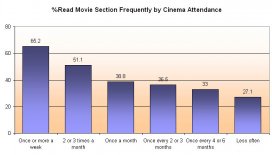Advertising Effectiveness
by
Jerry W. Thomas
The advertising industry, as a whole, has the poorest quality-assurance systems and turns out the most inconsistent product (their ads and commercials) of any industry in the world. This might seem like an overly harsh assessment, but it is based on testing thousands of ads over several decades. In our experience, only about half of all commercials actually work; that is, have any positive effects on consumers’ purchasing behavior or brand choice. Moreover, a small share of ads actually appear to have negative effects on sales. How could these assertions possibly be true? Don’t advertising agencies want to produce great ads? Don’t clients want great advertising? Yes, yes, they do, but they face formidable barriers.
Unlike most of the business world, which is governed by numerous feedback loops, the advertising industry receives little objective, reliable feedback on its advertising. First, few ads and commercials are ever tested among consumers (less than one percent, according to some estimates). So, no one—not agency or client—knows if the advertising is any good. If no one knows when a commercial is good or bad, or why, how can the next commercial be any better? Second, once the advertising goes on air, sales response (a potential feedback loop) is a notoriously poor indicator of advertising effectiveness because there is always so much “noise” in sales data (competitive activity, out-of-stocks, weather, economic trends, promotional influences, pricing variation, etc.). Third, some of the feedback is confusing and misleading: agency and client preferences and biases, the opinions of the client’s wife, feedback from dealers and franchisees, complaints from the lunatic fringe, and so on.
Barriers to Great Advertising
Advertising testing could provide a reliable feedback loop and lead to much better advertising, but many obstacles stand in the way. The first great barrier to better advertising is self-delusion. Most of us believe, in our heart-of-hearts, that we know what good advertising is and that there is no need for any kind of independent, objective evaluation. Agencies and clients alike often think that they know how to create and judge good advertising. Besides, once agencies and clients start to fall in love with the new creative, they quickly lose interest in any objective evaluation. No need for advertising testing. Case closed.
Strangely, after 40 years of testing advertising, we cannot tell you if a commercial is any good or not, just by viewing it. Sure, we have opinions, but they are almost always wrong. In our experience, advertising agencies and their clients are just as inept at judging advertising as we are. It seems that none of us is smart enough to see advertising through the eyes of the target audience, based purely on our own judgment.
A second barrier to better advertising is the belief that sales performance will tell if the advertising is working. Unless the sales response to the advertising is immediate and overwhelming, it is almost impossible to use sales data to judge the effectiveness of the advertising. So many variables are beyond our control, as noted, that it’s impossible to isolate the effects of media advertising alone. Moreover, some advertising works in a few weeks, while other advertising might take many months to show positive effects, and this delayed response can confound our efforts to read the sales data. Also, advertising often has short-term effects that sales data might reflect, and long-term (years later) effects that most of us might easily overlook in subsequent sales data. Because of these limitations, sales data tends to be confusing and unreliable as an indicator of advertising effectiveness.
Sophisticated marketing mix modeling is one way to measure these advertising effects on sales, but it often takes millions of dollars and years of effort, and requires the building of pristine databases of sales information along with all of the marketing input variables. Few companies have the budget, the patience, the accurate databases, and the technical knowledge necessary to succeed at marketing mix modeling. Even so, marketing mix modeling does not help us evaluate the contribution of a single commercial but rather the cumulative effects of many different commercials over a long period of time. Also, marketing mix modeling does not tell us why the advertising worked, or failed to work. Was it message, or media weight, or media mix that made the advertising effective? Generally, marketing mix modeling cannot answer these types of questions. So, again, sales data is of limited value when you make critical decisions about your advertising.
A third barrier to better advertising is a pervasive tendency of many (but not all) advertising agencies to delay, undermine, and thwart efforts to objectively test their creative “babies.” Who wants...











